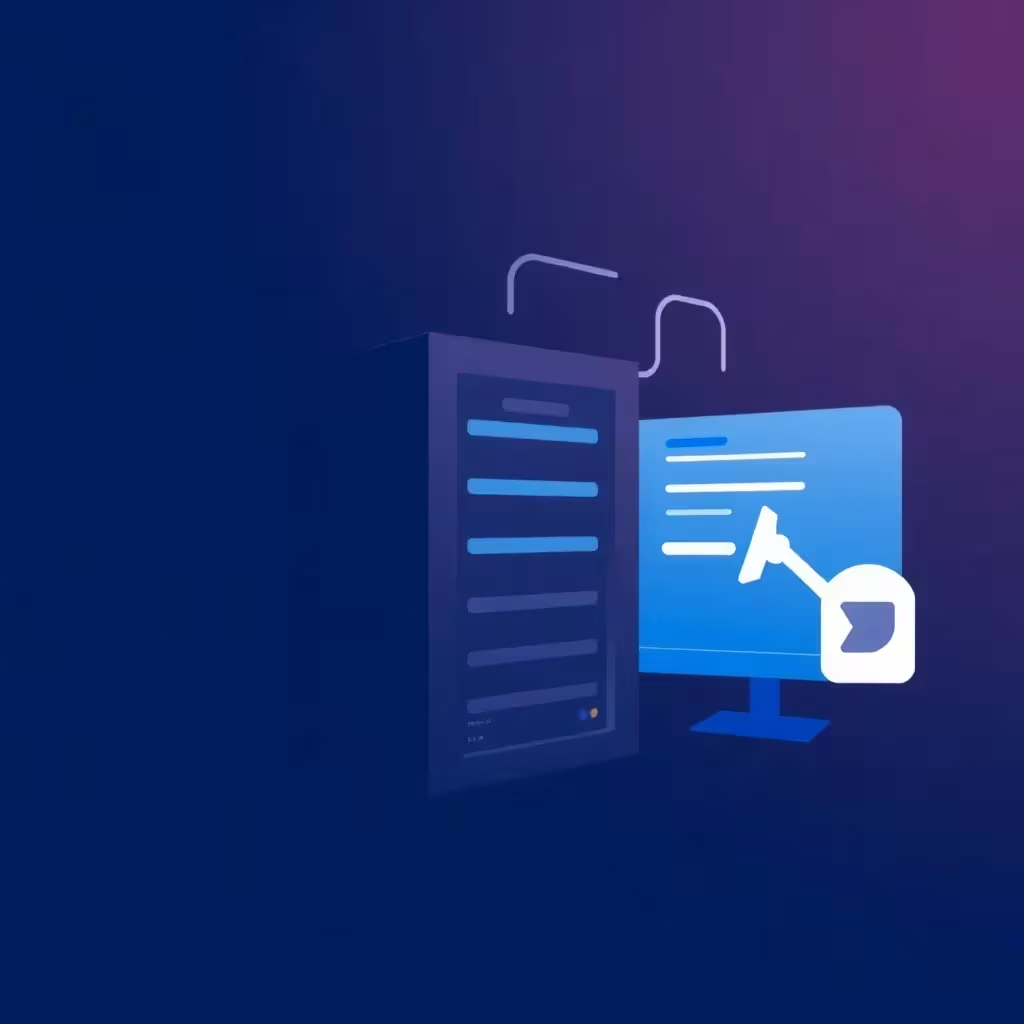Who really Optimize usability If you want to be successful, you have to combine technology and user psychology. After all, digital products only bring real added value if users can operate them efficiently, error-free and with a positive feeling. In my projects, I see time and again how crucial a successful combination of technology, design and psychology is. If you focus too heavily on just one of these fields, you ignore important factors that determine the success or failure of a website or application.
Key points
- Intuitive operation increases the dwell time and conversion rate.
- User feedback reveals weaknesses in structure and layout.
- Consistent design provides orientation and avoids frustration.
- Loading times significantly influence user behavior and SEO ranking.
- Cross-device user guidance is essential in the mobile age.
All of these aspects are interlinked. A design may be visually appealing, but if the navigation doesn't work or loading times are too high, users will still bounce. I therefore concentrate on giving equal consideration to all areas. Intuitive operation, for example, can't just be created with appealing icons, but also requires a well thought-out information architecture. And what good is the most stylish color scheme if the website loads too slowly? For me, the interplay of these points forms the foundation of good usability.

Understanding usability: What really influences user-friendliness?
Usability is about more than just looking good. It affects the entire user experience - from the first interaction to the desired goal. An application with high usability responds reliably, has a logical structure and is visually clear. Do your pages load in under two seconds? Can visitors find their way around without help? Click paths, information architecture and accessibility determine the length of stay and customer loyalty. And don't forget: clear user guidance reduces support requests and increases efficiency.
It is also important to put yourself in the shoes of different target groups. Older users have different needs than digital natives. The requirements of a B2B platform differ from those of an online store for end consumers. If you assess your target groups correctly, you can adapt menu structures and layouts specifically to their expectations. For example, I make sure that interactive elements are clearly recognizable and sufficiently click- and tap-friendly. A click area that is too small is a frequent source of frustration, especially for mobile use.
Accessibility is also playing an increasingly important role. Screen reader-compatible content, sufficient contrast and easy language are no longer niche concerns, but an essential part of a professional, user-friendly website. Investing here also increases your potential target group. The topic of accessibility can also be relevant for SEO, as search engines now place greater value on aspects such as semantic structure and readability.
User feedback is worth its weight in gold
I regularly analyze how users react to individual components. This means asking questions, checking heat maps or running A/B tests. Tools such as Hotjar or Google Optimize can be used to evaluate click behaviour, scroll depth and mouse movements. Feedback surveys provide authentic opinions. This data shows where users drop out or where individual content needs to be revised. You can see whether a button is logically placed or whether a headline is understandable.
However, many companies shy away from the effort of interviewing real users. A small test group is often enough to uncover the main problems. Feedback must also be systematically evaluated, otherwise it degenerates into mere data collection. I use clear dashboards in which I keep a constant eye on heatmap data, drop-out points in forms or statements from surveys. Specific measures can be derived from this: Impromptu interviews or focus groups can clarify why a certain paragraph is poorly understood, for example.

Typical errors that destroy usability
A cluttered homepage, tiny font sizes or hidden call-to-actions make it difficult to get started. Users are impatient: only a few seconds decide whether they click or bounce. Overly aggressive pop-ups can also be off-putting. Equally critical: menus that cannot be operated on mobile devices or are superimposed over content. I make sure that Responsive web design best practices be used consistently everywhere.
Another mistake is the lack of a clear navigation structure: anyone who constantly loses their bearings will quickly click away. The importance of comprehensible language is also often underestimated. Complicated technical terms or endless sentence constructions ensure that visitors do not get to the actual point. Content-relevant elements such as headlines or teasers must not be lost in designer whimsy. I recommend checking every page not only visually, but also in terms of readability and findability.
Furthermore, I often observe that important contact details or information - such as shipping costs - remain well hidden. This means you lose out on potential sales. Transparency and short click paths are therefore essential if you don't want to frustrate users. If you are aware of these typical mistakes and specifically avoid them, you are already laying a solid foundation for improved usability.
Measurability of good usability: Which key figures count?
Good usability is not just a feeling - it can be measured. You can find the most important key figures in the following overview:
| Measured variable | Meaning | Optimal result |
|---|---|---|
| Bounce rate | Percentage of visitors who only view one page | Under 40 % |
| Session duration | Length of stay per visit | More than 2 minutes |
| Click depth | Number of pages per session | 3+ pages |
| Conversion rate | Visitors who reach their destination | Depending on destination from 2 % |
| Feedback rate | Response to surveys | About 5 % |
These key figures quickly show whether the optimizations are working. If you operate an e-commerce site, you should focus primarily on conversion rate and bounce rate. In a content portal or blog, the session duration or click depth is more important. However, I also always look at indicators such as the number of support requests or feedback on social media. Seemingly banal comments often conceal a structural weakness. It is important to always look at key figures in context and not just pick out individual values.

UX vs. UI: What's the difference?
Many people confuse UX (user experience) with UI (user interface). Although the user interface is the visible level, it is the overall user experience that reveals whether your platform works. UX deals with the structure, flow and user guidance. UI, on the other hand, concerns colors, fonts, buttons and icons. I therefore recommend close coordination between design, content and technology - especially for relaunches or major adjustments.
It is important to understand that an excellent UI design alone does not automatically ensure a good UX. A site can be visually appealing, but if the processes are cumbersome or important information is missing, the user experience suffers. Users experience the sum of all impressions, not just the graphical interface. Microinteractions also play a major role: small feedback such as animations or visual effects on clicks. Used correctly, they enhance the positive experience and make certain functions clearer. However, they should never be an end in themselves. The following always applies: functionality before showmanship.
Carrying out usability tests - this is how I proceed
I start with a near-series prototype and let real users test it. Just a few people uncover critical hurdles - such as unusual wording, hidden elements or stumbling blocks in forms. This is followed by A/B tests: two layouts in direct comparison reveal where click figures increase. This is supplemented by eye tracking or session recordings. Good texts for users and search engines also reduce confusion and increase orientation.
During the test runs, I make a point of introducing the test subjects to the site unprepared. This shows how intuitive the navigation actually is. It can be invaluable to simply watch and listen to the users: Where do they falter, why don't they click on a button that should obviously work? Such insights flow directly into optimization. Larger companies invest in professional usability labs, while smaller ones make do with remote tools where testers share their screen and their reactions.
Qualitative approaches are also justified: Interviews where you talk openly about your impressions often provide honest feedback. However, many people only express problems if you ask specific questions. Asking the right questions and observing behavior carefully often reveals more than pure figures. I then like to create decision bases with clearly prioritized to-dos. In this way, usability can be increased step by step without sinking into chaos.

Performance counts: Loading times are crucial
I often find that great designs are torpedoed by slow loading times. The bounce rate increases dramatically after just 3 seconds. Images should be compressed, JavaScript minimized and server times optimized. A hosting package with low traffic is usually not enough. It is worth taking a look at the technical basics here. Especially if you Optimize WordPress pages professional support is worthwhile.
Choosing the right hosting and cleaning up the code are common adjustments that are underestimated at the beginning. I recommend regularly using tools such as Google PageSpeed Insights or GTmetrix to uncover weak points. Issues such as caching, content delivery networks (CDNs) and correctly configured server settings are essential today to ensure performance. In the e-commerce sector in particular, every additional second of loading time can mean a noticeable loss of sales. In addition, search engines rate fast pages better, which ultimately also improves the ranking.
Responsive design is mandatory, not optional
Today, over 60 percent of website visits are made on mobile devices. However, many applications still do not offer a well thought-out mobile version. This does not necessarily require separate apps - a responsive implementation of the main website is often sufficient. Touch-friendly buttons, adapted menu logic and reduced content ensure user-friendliness. Tested breakpoints for tablets and smartphones should be no exception.
In my opinion, it is advisable to apply the so-called mobile-first strategy as early as the concept phase: You start designing for small screens, where space and attention span are limited. If you then have to scale up to desktop, you usually see much clearer structures. But regardless of whether mobile-first or classic: in any case, layout and content must not fall apart by chance. You also have to bear in mind that users on the move can pursue different goals than on the desktop. A quick way to make contact or a compact menu can be more important on mobile than full-sized image galleries.

Usability as part of a sustainable SEO strategy
User behavior influences your ranking. If you jump back to Google search, you are signaling: This page was not helpful. The longer visitors stay, the better the ranking. Structured data, semantic HTML tags and clear URL structures also improve findability. I therefore always combine UX design and SEO together. Because both disciplines benefit from short loading times, comprehensible content and clear user paths.
The return rate of visitors is also an important factor. If people visit the site several times, this indicates added value. However, good content alone is not enough if the interface design hinders the reader. A harmonious interplay of SEO texts, findability and intuitive navigation ensures that the page rises in the search results and that users are happy to stay. Technical errors such as 404 pages or illogical redirects, on the other hand, act as huge stumbling blocks.
Small adjustments with a big impact
Conversion rates can be increased simply by changing button colors, simplifying forms or providing more logical menu navigation. The search function also deserves more attention: prominent placement, auto-completion and filter options make all the difference. I regularly check heatmaps and form analytics - ten targeted corrections are often enough for noticeable improvements.
With forms in particular, it is worth optimizing the order of the fields, their labels and even the decision as to which fields are mandatory. Users are quickly put off if they have to provide too much information. In addition, a clear progress bar or an indication of how many steps the form has increases the willingness to fill it out. I like to use modular layouts here, where users are guided through the process step by step. At the same time, you reduce complexity by excluding unimportant fields.
Small adjustments can also promote accessibility: For example, by using sufficient color contrasts or ARIA labels for screen readers. Such steps are often only minimally noticeable, but have a big impact for certain user groups. In my day-to-day work, I see that many websites could significantly increase their user-friendliness with just small steps - provided they scrutinize details and test regularly.

What you should remember
Optimizing usability is not a one-off feat. It is a continuous improvement process that combines strategy, empathy and technology. I recommend investing regularly in key figures, user feedback and tests. Because those who understand their users create trustworthy, functional and profitable platforms. The reward: satisfied visitors, loyal customers - and long-term digital success.
In my experience, consistent improvements on a small scale often have the greatest effect. If you only check the data briefly after the launch, you are not doing yourself any favors. It is much more important to keep at it and develop the site further. Whether in e-commerce, corporate communications or blogging, satisfied users not only return, but also recommend an offer to others. And in times of fierce competition and rising customer expectations, this is a real competitive advantage.
Also think about the interplay between technology and content: perfect loading times are of little use if the page remains confusing. A great layout is just as useless if the backend constantly spits out errors. A comprehensive usability strategy takes everything into account, from hosting and code quality to the language used. This is how you make your website fit for current and future user needs. If you constantly work on optimization, you will not only see success in numbers, but also gain more trust from your target group.



